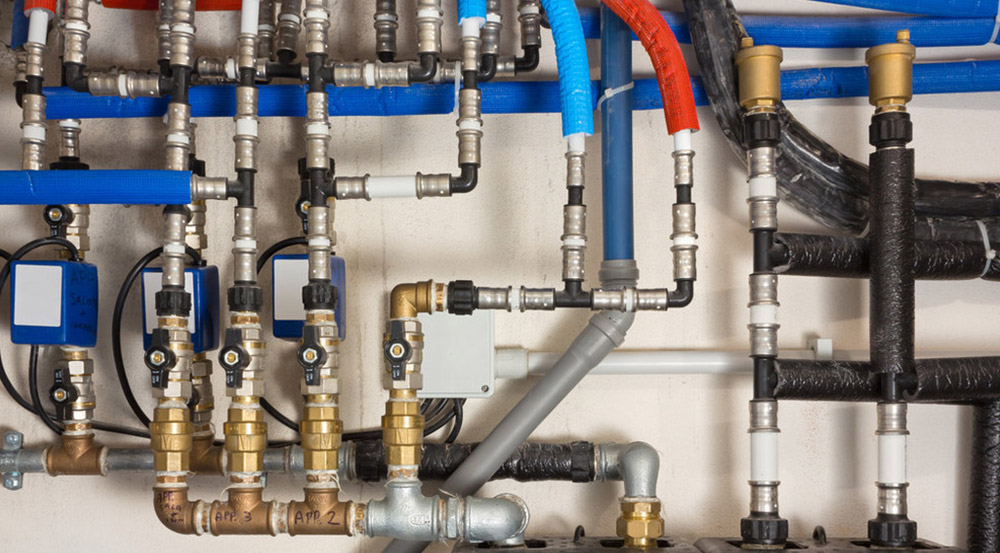Globe valves, gate valves, butterfly valves, check valves, and ball valves are all indispensable control components in various pipeline systems today. Each type of valve has differences in appearance, structure, and even functional use. But globe valves and gate valves have some similarities in appearance, and both have the function of cutting off in pipelines, so many friends who have little contact with valves may confuse the two. In fact, if carefully observed, the difference between globe valves and gate valves is quite significant.
01 Structurally
When the installation space is limited, attention should be paid to selection. Gate valves can rely on medium pressure to tightly close the sealing surface, thereby achieving the effect of no leakage. When opening and closing, the valve core and valve seat sealing surfaces always come into contact and rub against each other, so the sealing surfaces are prone to wear. When the gate valve is close to closing, the pressure difference between the front and back of the pipeline is large, causing more severe wear on the sealing surface.
The structure of a gate valve is more complex than that of a globe valve. In terms of appearance, under the same caliber, the gate valve is higher than the globe valve, and the globe valve is longer than the gate valve. In addition, gate valves can be divided into open stem and concealed stem. The shut-off valve is not available.
02 Working principle
When the globe valve is opened and closed, it is a rising stem type, which means that when the handwheel is turned, it will rotate and lift along with the stem. And the gate valve rotates the handwheel to make the valve stem move up and down, while the position of the handwheel itself remains unchanged. The flow rate varies, and gate valves require full opening or full closing, while globe valves do not. The shut-off valve has specified inlet and outlet directions; Gate valves do not have requirements for inlet and outlet direction.
In addition, gate valves only have two states: fully open or fully closed, and the opening and closing stroke of the gate is large, resulting in a long opening and closing time. The travel of the valve plate of the globe valve is much smaller, and the valve plate of the globe valve can stop at a certain position during movement for flow regulation. And gate valves can only be used for cutting off and have no other functions.
03 Performance differences
Globe valves can be used for both cut-off and flow regulation purposes. The fluid resistance of the shut-off valve is relatively high, making it difficult to open and close. However, due to the short distance between the valve plate and the sealing surface, the opening and closing stroke is short.
Gate valves can only be fully opened and fully closed. When fully opened, the flow resistance of the medium in the valve body channel is almost zero, so the opening and closing of the gate valve will be very labor-saving. However, the distance between the gate plate and the sealing surface is far, and the opening and closing time is long.
04 Installation and flow direction
The effect of the gate valve is the same in both directions of flow, and there is no requirement for inlet and outlet direction during installation. The medium can flow in both directions. Globe valves need to be installed strictly according to the direction indicated by the arrow on the valve body. There is also a clear regulation on the inlet and outlet directions of globe valves. According to the “Three Chemicals” regulations for valves in China, the flow direction of globe valves is always from top to bottom.
The shut-off valve has a low inlet and high outlet, and from the appearance, there is a clear pipeline that is not on the same horizontal line. The gate valve passage is on a horizontal line. The stroke of a gate valve is larger than that of a globe valve.
From the perspective of flow resistance, when fully open, the gate valve has a smaller flow resistance and the load check valve has a larger flow resistance. The flow resistance coefficient of a regular gate valve is about 0.08~0.12, with a small opening and closing force, and the medium can flow in two directions. The flow resistance of ordinary stop valve is 3-5 times that of gate valve (official account: pump steward). When opening and closing, it is necessary to forcibly close to achieve sealing. The valve core of the shut-off valve only contacts the sealing surface when it is completely closed, so the wear on the sealing surface is minimal. Due to the large flow force, the shut-off valve that requires an actuator should pay attention to adjusting the torque control mechanism.
Working principle of float valve
The float must always float on the water, and when the water rises, the float also rises. When the float rises, it drives the connecting rod to also rise. The connecting rod is connected to the valve at the other end, and when it rises to a certain position, the connecting rod supports a rubber piston pad, sealing the water…







